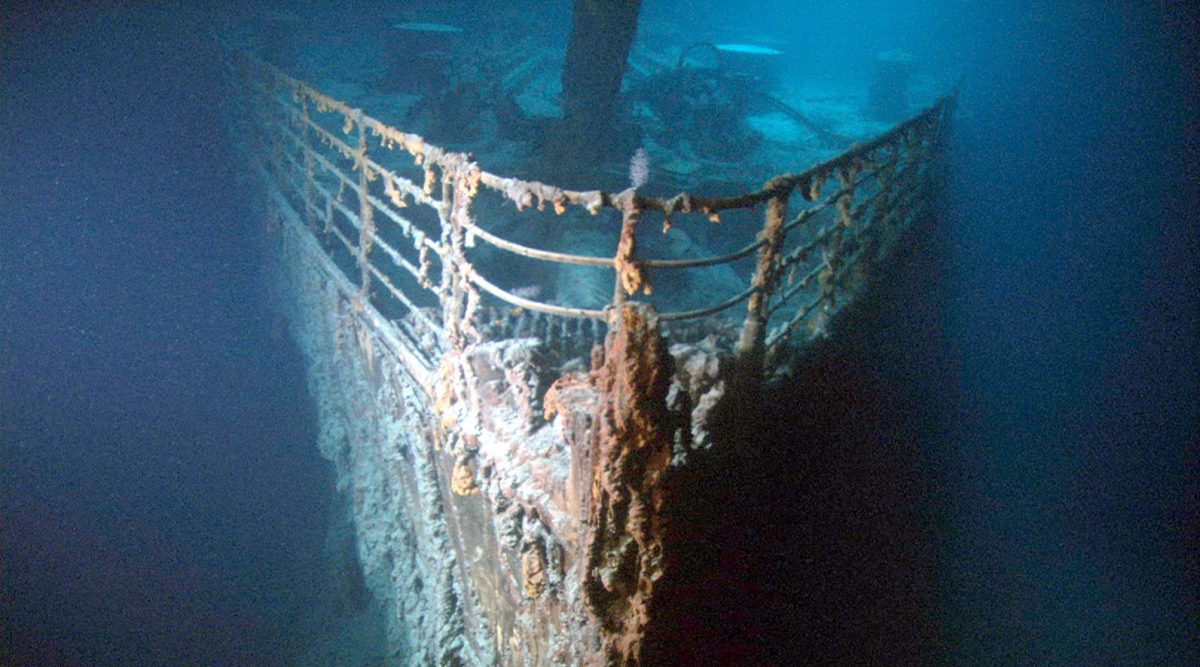What It’s Like to Dive to the Titanic in a Submersible
Posted on Categories Discover Magazine

The search continues for the missing Titan submersible, which lost contact with its parent ship on the morning of June 18, 2023, 1 hour and 45 minutes into a planned multi-hour dive to the wreck of the Titanic. The capsule-shaped vessel belongs to the OceanGate company, which offers seats on the submersible, and a chance to visit the famous ocean liner, at a cost of $250,000 person.
As the Boston Coast Guard leads a challenging rescue effort, details have begun to emerge about the cramped, exhilarating and potentially dangerous world of deep-sea submersibles.
Read More: Bacteria Are Eating the Titanic
Traveling Aboard the Titan Submersible
OceanGate developed Titan to be cost-effective and use as many off-the-shelf components as possible, and the interior is plain in design. The craft holds five adults, including a pilot, and a large viewing port the company often touts as the largest of its kind. The pilot steers by way of a video game controller and a sonar screen and what he/she can see out the port – there is no GPS this deep.
A control room at the surface, on the parent ship, sends sonic directions down to Titan via a communication system.
In a 2022 interview with The Huffington Post, former passenger and NASA scientist Alan Stern compared the ultra-short baseline acoustic system to “something like out of the ’80s […] and it’s really just text messaging back and forth, and there’s a long time delay. […] If I send a message to the surface, it takes 30 seconds to get up there.”
Drifting With the Ocean
Until the submersible makes visual contact with the Titanic, it relies on steering directions from up above and estimates as to where currents will take the craft.
“We know exactly where the Titanic is because of GPS and buoys,” says Stern in the interview. “We know where it is precisely, and we know where the submersible is on the ship at the surface because of GPS. But in between there are currents. And as you’re descending, you’re at the mercy of the currents,” which can carry Titan hundreds of meters from its planned descent.
As the hours go by, the passengers sit on the floor and use a small toilet, if necessary. The company asks passengers to limit their food intake before making the trip, but a privacy screen is reportedly available, along with music to mask the noise.
David Pogue’s Trip Aboard Titan
In 2022, when CBS correspondent David Pogue rode aboard Titan, he first signed a release that said, “This experimental vessel has not been approved or certified by any regulatory body, and could result in physical injury, emotional trauma, or death.”
Comms broke down during his 12-hour outing, and the pilot subsequently got lost for two and a half hours afterward and never found the wreck. As a consolation, OceanGate planned to send the affected passengers on a free trip to the Titanic the following year.
Diving to the Titanic in 1986
Down there, the margin of error is vanishingly narrow.
In 1986, following the discovery of the Titanic, the Woods Hole Oceanographic Institution (WHOI) staged an expedition that brought the Alvin deep sea submersible to the wreck, to survey it up close for the first time. On the first attempt, the sub had to make an emergency ascent when one of the battery tanks flooded.
On the second, Alvin nearly lost track of the Jason Jr. remotely operated vehicle and had to ascend, too. But the third dive, piloted by William Sellers, went much more smoothly.
The First Major Survey of Titanic
“Heading to the bottom in Alvin is actually pretty relaxing,” Sellers writes. “Well, as relaxing as you can get in a 6-foot sphere.”
Three men sat in the cramped space, along with life support equipment and all the electronic equipment needed for the trip. A lunch bag hung from a hatch handle on the ceiling, and the two men sitting in the rear held cases of videotapes on their laps. These would capture the famous blue-tinted footage of the Titanic that reintroduced it to the world.
The side of the old ship appeared out of the dark “like a huge wall,” writes Sellers, who knew to be wary of it.
“The biggest danger to any dive on Alvin is entanglement on the bottom,” he writes. “If I were to get us stuck and was unable to free the sub, we would become a bit of Titanic history ourselves. The Titanic is so far from land and so deep that there would be no real chance of rescue.”
Read More: The New 3D Scan of Titanic Wreck Footage Is Grim
More Work to Be Done
While rescuers have found no sign of the Titan, officials have sought the help of a remotely operated vehicle that can reach down to 20,000 feet, according to the Associated Press. Rescuers have also deployed sonar buoys, along with a P8 Poseidon aircraft, which can detect some submarines through radar.
WHOI says it is unable to provide “ocean exploration vehicles and equipment” for the search because the equipment is occupied in different parts of the world, according to spokeswoman Suzanne Pelisson. “But WHOI engineers and researchers are providing expertise as warranted. We are continuing to monitor the situation closely.”